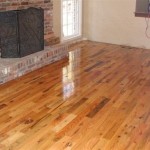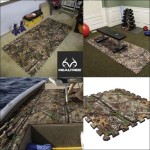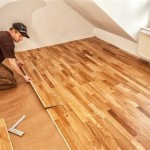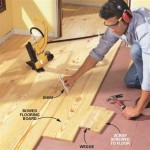Bamboo Wood Flooring Installation: A Comprehensive Guide
Bamboo wood flooring has gained immense popularity in the home improvement industry due to its durability, aesthetic appeal, and eco-friendly nature. It offers a unique and natural look, adding warmth and sophistication to any space. Installing bamboo wood flooring, however, requires meticulous planning and execution. This article will provide a comprehensive guide to installing bamboo wood flooring, covering essential steps, tools, and considerations.
1. Preparation and Planning
Before embarking on the installation process, careful preparation and planning are crucial. This involves several steps, including:
- Subfloor Assessment: Ensure the subfloor is level, smooth, and free from any defects such as cracks or dips. Uneven surfaces can lead to squeaks and uneven flooring. If necessary, repair or replace damaged sections of the subfloor.
- Moisture Control: Bamboo is susceptible to moisture damage. Therefore, it is essential to verify the moisture level of the subfloor and ensure it meets the recommended guidelines for bamboo flooring installation. Use a moisture meter to check the moisture content and take appropriate measures to control humidity.
- Material Selection: Choose the right type of bamboo flooring based on your budget, desired aesthetic, and desired level of hardness. Different bamboo species have different hardness ratings and colors. Consider factors such as strand woven, horizontal, vertical, and carbonized bamboo.
- Tools and Materials: Gather all the necessary tools and materials, including a tape measure, saw, hammer, nail gun, flooring underlayment, spacers, and adhesive or nails.
- Layout and Planning: Plan the flooring layout, considering the direction of planks, the starting point, and the layout of any obstacles or features in the room. Mark the starting point and use chalk lines or a laser level to ensure straight lines.
2. Installation Process
Once the preparation is complete, the installation process can begin. Here are the steps involved:
- Underlayment Installation: Install an underlayment over the subfloor. This provides a buffer layer, reducing noise and providing extra insulation. Choose an underlayment suitable for bamboo flooring.
- Starting the First Row: Begin laying the first row of bamboo planks from a starting point, ensuring the planks are butted together tightly. Use spacers to maintain a uniform gap between the planks and the walls.
- Laying Subsequent Rows: Align subsequent rows of planks, offsetting the joints from the previous row to create a staggered pattern. This provides stability and prevents the flooring from becoming loose over time.
- Securing the Planks: Secure the planks to the subfloor using adhesive or nails. Follow the manufacturer's instructions for the appropriate method and secure the planks with a hammer or a nail gun.
- Cutting and Trimming: Cut and trim the planks around obstacles, doorways, and wall corners using a saw. Ensure accurate measurements and clean cuts to avoid any gaps or misalignments.
- Installing Transition Strips: Install transition strips between different floor coverings, such as carpet or tile, to create a smooth transition and protect the edges of the flooring.
3. Finishing Touches and Maintenance
After completing the installation, finishing touches and proper maintenance are necessary to ensure the longevity and beauty of your bamboo wood flooring. Here are some steps to consider:
- Cleaning and Sealing: Clean the floor thoroughly after installation to remove any debris or dust. Apply a suitable sealant to protect the bamboo from scratches, stains, and moisture damage. This will enhance the durability and lifespan of the flooring.
- Acclimation: Allow the bamboo flooring to acclimate to the room temperature and humidity levels before sealing. This helps prevent warping or contraction.
- Regular Maintenance: To maintain the pristine condition of your bamboo flooring, regular cleaning and sweeping are essential. Avoid using harsh chemicals or abrasive cleaning agents. Use a damp mop with a mild cleaner specifically designed for bamboo floors.
Installing bamboo wood flooring can be a rewarding experience, adding a touch of elegance and natural beauty to your home. By following these steps and utilizing a skilled installer, you can enjoy the benefits of bamboo flooring for many years to come.
It is important to remember that proper installation and maintenance are key to maximizing the life of your bamboo wood flooring. Consult with a professional installer if you are unsure about any aspect of the process for optimal results.

4 Simple Ways To Install Bamboo Flooring On Plywood Wikihow Life

How To Install Bamboo Flooring Floated Diy Method

Diy Solid Bamboo Wood Flooring Happihomemade Family Friendly Recipes

Beginners Guide To Installing Bamboo Flooring The Company

How To Install Bamboo Flooring Tongue Groove Over Underlay

Cost To Install Bamboo Flooring In 2024 Forbes Home

5 Challenges Installers May Face With Bamboo Flooring

Bamboo Flooring Pros And Cons Forbes Home

Glue Down Installation Bamboo Hardwood Floor Over Concrete Slab Wood Sub

Bamboo Flooring Installation Methods Explained The Company
Related Posts








